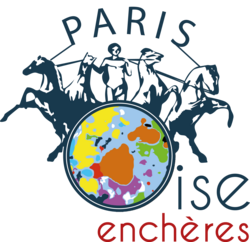HÔTELS DES VENTES DE CHANTILLY, SAINT OUEN
& DE RESSONS SUR MATZ
Paris Oise Enchères
Pascal Denoyelle
4 Avenue de Bourbon
60500 Chantilly
info@oise-encheres.com
+33 3 44 57 50 00
Pascal Denoyelle
4 Avenue de Bourbon
60500 Chantilly
info@oise-encheres.com
+33 3 44 57 50 00
Auguste Zamoyski en lumière dans notre prochaine vente !
This is the bronze "THEM TWO" OR "ICH DWOJE" by August ZAMOYSKI (1893- 1970)
Lost wax bronze with black patina signed on the front of the terrace and rectangular stamp on the back C. Valsuani.

This bronze was commissioned by the Zak Gallery in 1929 from the artist himself. Present in person during the great successes of Polish artists this year, he authorized a specific C. Valsuani font, which was immediately sold to a collector in Lyon for a value of 14,000 French francs at the time.
Galerie Zak was an art gallery founded in Paris, France, in 1928 and specializing in modern European and South American art until it closed in late 1960.
The gallery was known for hosting Wassily Kandinsky's first solo exhibition in Paris, as well as exhibiting works by Marc Chagall, Amedeo Modigliani and Jules Pascin.
The gallery was established by Jadwiga Zak (née Kon, 1885-1943) in 1928. She was known to all as Madame Zak, although her husband, the Russian / Polish painter Eugeniusz Zak (also known as the 'Eugène Zak), who died in 1926. The gallery established by Jadwiga at 16, rue de l'Abbaye, in Saint-Germain-des-Prés on the left bank of Paris, has become an important place for Polish art and Latin American. She sponsored the first exhibition of the members of the Paris Committee, the Kapistes.
The first success of the Kapists as an artistic group was the painting competition launched in 1929 by the Polish Ambassador to France, Alfred Chłapowski and the Association of Polish Artists in Paris. The competition jury is made up of eminent representatives of the Parisian artistic world: Georges Rouault, Raoul Dufy, Othon Friesz, André Salmon and Józef Pankiewicz. The kapistes are awarded five awards. The presentation of the winning works takes place in the studio of August Zamoyski located on Avenue du Maine and is a resounding success.
We have documents that contribute to the history of this bronze, to its provenance.
Indeed, we attach to this sculpture an authentic document: a typed invoice from the ZAK gallery, 16 rue de l'Abbaye, place Saint Germain des Prés, dated 1929. We learn that the gallery sells this bronze. after exposing it.

Auguste Zamoyski, born June 28, 1893 in Jabłoń in Poland and died May 19, 1970 in Saint-Clar-de-Rivière, is a Polish sculptor who participated in the Formist movement.
Born into a large family of the Polish nobility, Zamoyski took courses in law, economics and agronomy in Freiburg, then philosophy in Heidelberg. His interest in aesthetic theory would never falter, as evidenced by the lecture on Art and Substance that he gave in 1954 at the International Congress of Philosophy, in Sao Paulo.
Back in Poland, he settled in Zakopane, “the Chamonix of Poland”, a meeting place for Polish artists and intellectuals of the time.
He participated in the creation of an expressionist artistic movement which in 1919 took the name of Formism which is "the most important aesthetic movement of independent Poland".
The essential characteristic of the movement, according to Leon Chwistek, often considered, next to Witkiewicz, as the main theorist of Formism is "the attempt to create a new style, on the basis of the concepts of realism and beauty, which developed from of the experience of cubists, futurists and expressionists ”.
There are generally three periods in the development of Zamoyski's work:
- The Formist period (1917 - 1925), in Zakopane (Poland)
- A realistic period (1925 - 1950) (France, Brazil)
- a period of spiritual expressionism (from 1950); last years in Brazil, France, Poland
In 2002, Hélène Zamoyska donated a large part of Auguste Zamoyski's work to Sylvanès Abbey, and the Zamoyski museum opened its doors in 2009.

On the occasion of the fiftieth anniversary of the sculptor's death (2020), an exhibition entitled Auguste Zamoyski. Thinking in stone, as well as an edition of the sculptor's archives are organized in Poland (2017 - 2020) by the Adam Mickiewicz Museum of Literature in Warsaw in collaboration with the Auguste Zamoyski de Sylvanès Museum.
On January 15, 2019, the collection of Zamoyski's works kept in Sylvanes since 2009 was acquired by the National Museum in Warsaw. It includes ninety-three pieces that have been exhibited in this museum since May 17, 2019.


